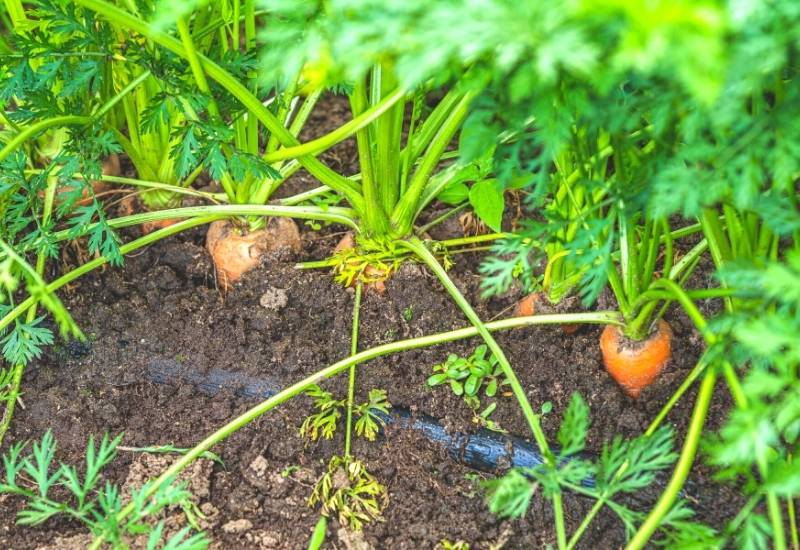Growing carrots in soil can be a rewarding experience, as these root vegetables are relatively easy to cultivate. Here’s a step-by-step guide on how to grow carrots in soil:
- Soil Preparation:
- Choose a sunny location in your garden that receives at least six hours of direct sunlight per day.
- Carrots prefer loose, well-draining soil. Remove any rocks, clumps, or debris from the planting area.
- Improve the soil structure by adding organic matter, such as compost or well-rotted manure, to increase fertility and promote better drainage.
- Selecting Carrot Varieties:
- Choose carrot varieties suitable for your growing conditions. Consider factors such as flavor, color, shape, and maturity time.
- Carrot varieties can vary in size and shape, ranging from short and stubby to long and slender. Select a variety that suits your culinary preferences or growing goals.
- Sowing Seeds:
- Carrots are typically grown from seeds rather than transplants.
- Carrot seeds are small and can be challenging to handle. To aid in sowing, mix the seeds with sand or fine dry soil before scattering them evenly over the prepared soil.
- Sow the seeds about 1/4 to 1/2 inch deep, spacing them approximately 1-2 inches apart. Leave about 12-18 inches of space between rows to allow the carrots to develop fully.
- Watering and Moisture:
- Carrots require consistent moisture throughout their growth. Keep the soil evenly moist but not waterlogged, as excess moisture can cause the roots to rot.
- Water the carrot seeds immediately after sowing and continue to water regularly, particularly during dry spells.
- Use a gentle watering method, such as a watering can or drip irrigation, to avoid displacing the seeds or causing soil erosion.
- Thinning:
- Once the carrot seedlings have emerged and reached a height of a few inches, thin them to ensure proper spacing.
- Thin the seedlings by carefully removing the excess plants, leaving approximately 2-3 inches between each carrot. This allows enough room for the roots to grow.
- Mulching:
- Apply a layer of organic mulch, such as straw or wood chips, to help retain soil moisture, suppress weed growth, and protect the carrot roots.
- Mulching also helps maintain a more consistent soil temperature and prevents the carrot shoulders from turning green.
- Pest and Weed Control:
- Regularly inspect your carrot plants for signs of pests, such as aphids, carrot rust flies, or nematodes. Use organic pest control methods, if necessary.
- Remove any weeds that compete with the carrot plants for nutrients and water. Be careful not to disturb the delicate carrot roots during the weeding process.
- Harvesting Carrots:
- Carrots are usually ready for harvest between 60 and 80 days after sowing, depending on the variety.
- Gently loosen the soil around the carrot plants before pulling them out. Grasp the carrot greens near the base and lift them out of the ground.
- Harvest carrots when they have reached the desired size and color, typically around 1/2 to 1 inch in diameter. Younger carrots tend to be more tender and sweet.
By following these steps, you can successfully grow carrots in soil. Enjoy the process and the satisfaction of harvesting your homegrown carrots for delicious meals and snacks.



